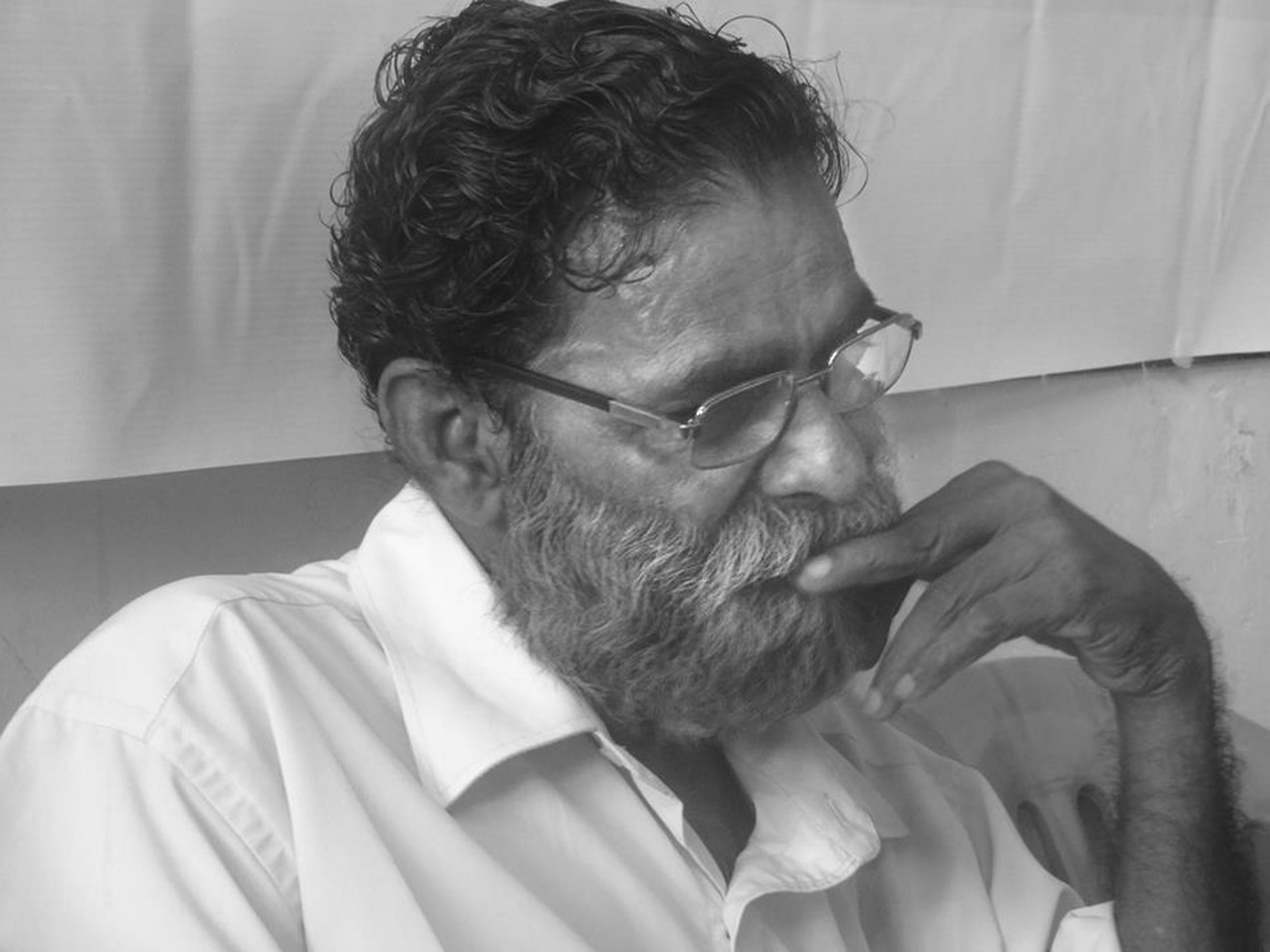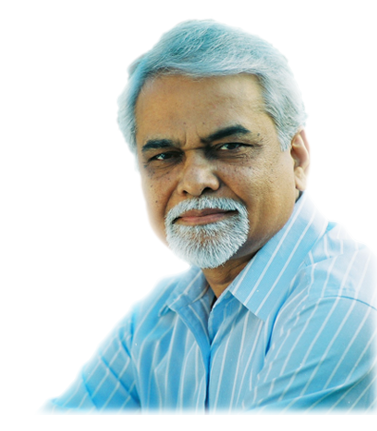Dr. K. Jamanadas
Dr. Ambedkar asked to use temple money for public good
In a special editorial in Mahanayak of 14th July 2012, titled, ‘Name of God, wealth of Brahmins’, the author has given interesting statistics. The following is the gist of it.
Mr. Sharad Yadav has recently demanded that the money collected in the temples should be taken over by the government. Sharad Yadav is one of the militant OBC leaders who emerged after the post-Mandal agitation. India is considered to be the most backward country in the world in the matters of education, health, malnutrition of children, poverty and neglect of human rights. But the people in the country are quite generous in donating money to the temples. They are far ahead in this respect of all throughout the world.
On 24th of January 1954, Dr Ambedkar had said in a conference of the devotees of Saibaba, that money is collected in the name of religion and spent on improper matters. In the present condition of poverty and misery, it is a highly criminal tendency to collect the money in the name of religion and spend it on festivals or on Brahmins. The money should be spent on hospitals, on education, on industrial enterprises, to provide employment to the unemployed, on poor and helpless women, on vocational training, and matters like these. The suggestion of Sharad Yadav is in consonance with the ideas expressed by Dr Babasaheb Ambedkar. Therefore, we support the suggestion of Mr. Sharad Yadav, wholeheartedly.
Creation of unthinking society
Among the various organizations in India, which control the national life of the country, there have been tremendous efforts to create the ‘religious individual mentality’ meaning promotion of unthinking mentality, among the masses, during last 25 years. As a result of this, in every state of the country, the number of temples, mosques and other religious places are on the increase in great numbers. As an example, in Tamil Nadu, there were approximately 2,00,000 temples in 1970, now we get the number of 3,00,000 in the year 2010. Out of these 38,481 are the big temples under supervision of Tamil Nadu government. These temples hold 4,78,462 acres of agricultural land, 22,599 buildings and 33,627 commercial establishments. The average monthly income of each of these temples is 28.27 crores of rupees. But the government does not get a penny out of this income. On the contrary, the Tamil Nadu government spent 35 crores of rupees on these temples during last five years, as recommended by 12th and 13th finance commission. In the neighboring Karnataka State also, there are 2,07,000 temples. Their declared annual income on an average is 72 crores of rupees. In the whole of India, there are approximately one million temples. These temples do not come under the purview of land reform Acts, and in no state, there is any land ceiling act, applicable to these temples.
Problem of Land
Taking undue advantage of this, the corrupt bureaucracy, politicians, the priest in the temples and religious organizations have colluded together and purchased crores of acres of land in the name of temples. For example, the Jaganath temple at Puri has 57,248.81 acres of land. In Rajasthan, Gagamedhi, Rishabdev, Raghunath mandir, Kunjbihari mandir, and Charbhuja mandir – these six temples possess one lakh bighas of land. In Maharashtra, approximately 2,500 acres of land stand in the name of temples. Guruvayur temple in Kerala has got 13,000 acres of land, and Vaishnodevi temple has got 50,000 acres of land.
Lakhs of temples, if taken into consideration all over India, it will be seen that lakhs and lakhs of acres of land have been horded in the name of God. If all this land is taken possession of by the government and distributed to the landless people, question of Indian poverty will at least be solved to the extent of 50 per cent.
Wealth and Income of temples
The precious metal and jewellery lying idle in this form to such an extent that the whole world is astonished. Padmanabha temple in Kerala, movable property is estimated to be one hundred thousand crore. (Recently, this estimate has been increased to one million crores) It contains the god’s image of 500 kilograms of gold, 17 kg historical golden coins, and 250 kg of golden ornaments and hundreds of bags, filled with precious stones and jewels.
In Andhra Pradesh temple of Tirumala Tirupati, their declared income is annually 700 crores of rupees. This temple has 5 tonnes gold, and there are ornaments of 1000 kg of gold on the image itself. There are jewels and precious stones worth crores of rupees and 560 crores cash deposits.
The declared annual income of Sai temple at Shirdi is 350 crores. And it is having 100 crores in ornaments and 427 crores bank deposits. The declared annual income of the Siddhi vinayak temple at Bombay is 48 crores of rupees, and it has got bank deposits of 125 crores. The daily income of Vaishnodevi temple in Jammu and Kashmir is 40 crores. The Guruvayur temple in Kerala has bank deposits of 400 crores of rupees and 40 elephants. One of these elephants can be purchased and donated back to the temple at the cost of minimum of one million rupees.
OBC leaders protectors of Brahmins
Two years back, the then chief Minister Maharashtra, Mr. Ashok Chavhan and the self declared OBC leader Chagan Bhujbal had gone to this temple of Guruvayur and spent lakhs of rupees, and even donated elephants. There was an editorial on 12th April 2010, in this paper under the title “Bhujbal – leader of OBCs or protector of Brahmins”, exposing his actions.
Problem of Employment
There is a parallel economy of temples in this country. This has created a great danger not only to the Indian economy but also to the security of the country. The priests appointed for performing Puja in these temples and their helpers and assistants, are all Brahmins. In Tirupati temple alone, there are 14 thousand workers. The Kerala Devasthan Board has got 15,000 workers, whereas Tamil Nadu Devasthan Department has got 25,000 of these workers. These posts do not have the Govt. rules regarding reservation for SC, ST, OBC applicable to them. Therefore, it is clear that that only the Brahmin workers are recruited.
This tremendous opportunity of employment is not available to the Shudra Hindus, who are the main donors of Daxina to these temples. The devotees visiting the temples and giving ample Daxina are mostly the Shudra Hindus, whereas, those getting the creamy benefits are the Brahmins.
This kind of unjust scenario is seen in the Gods’ Durbars. As the Brahmins have tremendous opportunities of employment in the temples, there is no unemployment among the Brahmins. No Shudra Hindu comes forwards against this scenario, but these very Shudra people are always coming forward to oppose the reservations given to SC, ST and OBCs. This shows that the Manuvadi organizations have been successful in creating a society with ‘religious individual mentality’, meaning the mentality of irrational thinking men and women.
Problem of Black Money
Right from the BJP to the ‘nautanki’ Babas Hazare and Ramdev, all are shouting hoarse about black money problem in India. But the main and a large source of black money in India is the temples. There are literally thousands of organizations related to these temples, which are fed on a lion’s share of the declared and undeclared income of these temples. And these bogus so-called charitable institutions prepare various plans on paper and obtain funds amounting to crores of rupees from these temples. It should be of special interest to note that all such institutions and organizations are run by the Brahmins alone. The possibility cannot be denied that, that the black money from the temples is made available to the Hindu organizations involved in terrorist activities in India.
The illegal and immoral activities
This illegal activity has given birth to innumerable immoral activities going on in temples, flourishing prostitution going on at the centers of pilgrimages, the immoral trafficking of women and minor girls, the sexual exploitation of the gullible female devotees by the Pundas and Pujaris in the temples and officers and heads of the religious mutts.
To maintain their control over the financial activities, the chiefs of the temples and of the mutts get involved in the illegal activities of criminal nature. This has been proved by the charges of alleged murder in the case of the chief Shankaracharya of Kanchi Kamkoti Peeth, Jayendra Saraswati.
The priests of the temples consider themselves as the scholars and authority of religion. Therefore, these Pundas and Pujaris do not give any importance to the Indian Constitution. These slaves of religious books are the ones who are maintaining the caste system in India.
Need for a special Act
The RSS and many related organizations are active in promoting the caste system by using the money in the temples and are trying that, among the citizens of India, there should be no brotherhood, and the society should be permanently kept divided.
Considering all these matters, it is necessary that the government passes a new independent Act for the benefit of the nation and of the citizens, for control of the affairs of the temples, control the expenditure of the amount collected in the temples and for appointment of human resources necessary for the working of the temples. Otherwise, one-day, these temples will create a danger to the very existence of the nation.
~~~
Dr. K. Jamanadas,
‘Shalimar’, Main Road, Chandrapur- 442 402.









